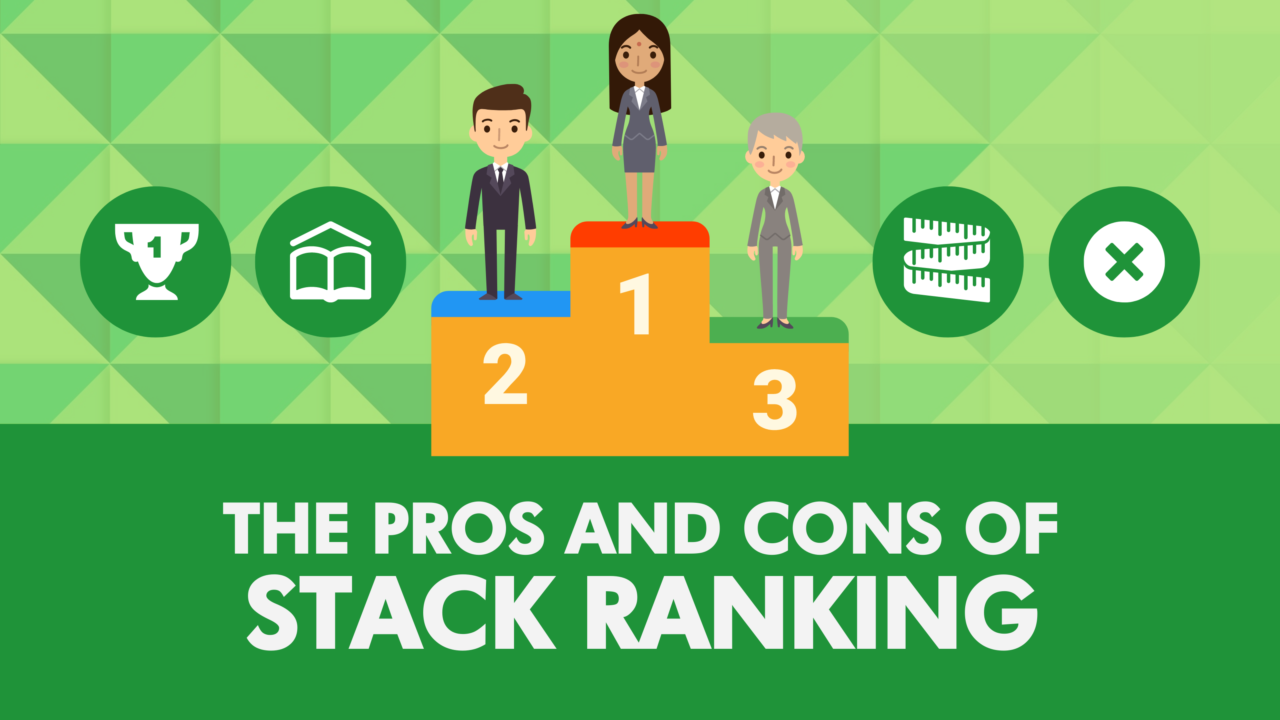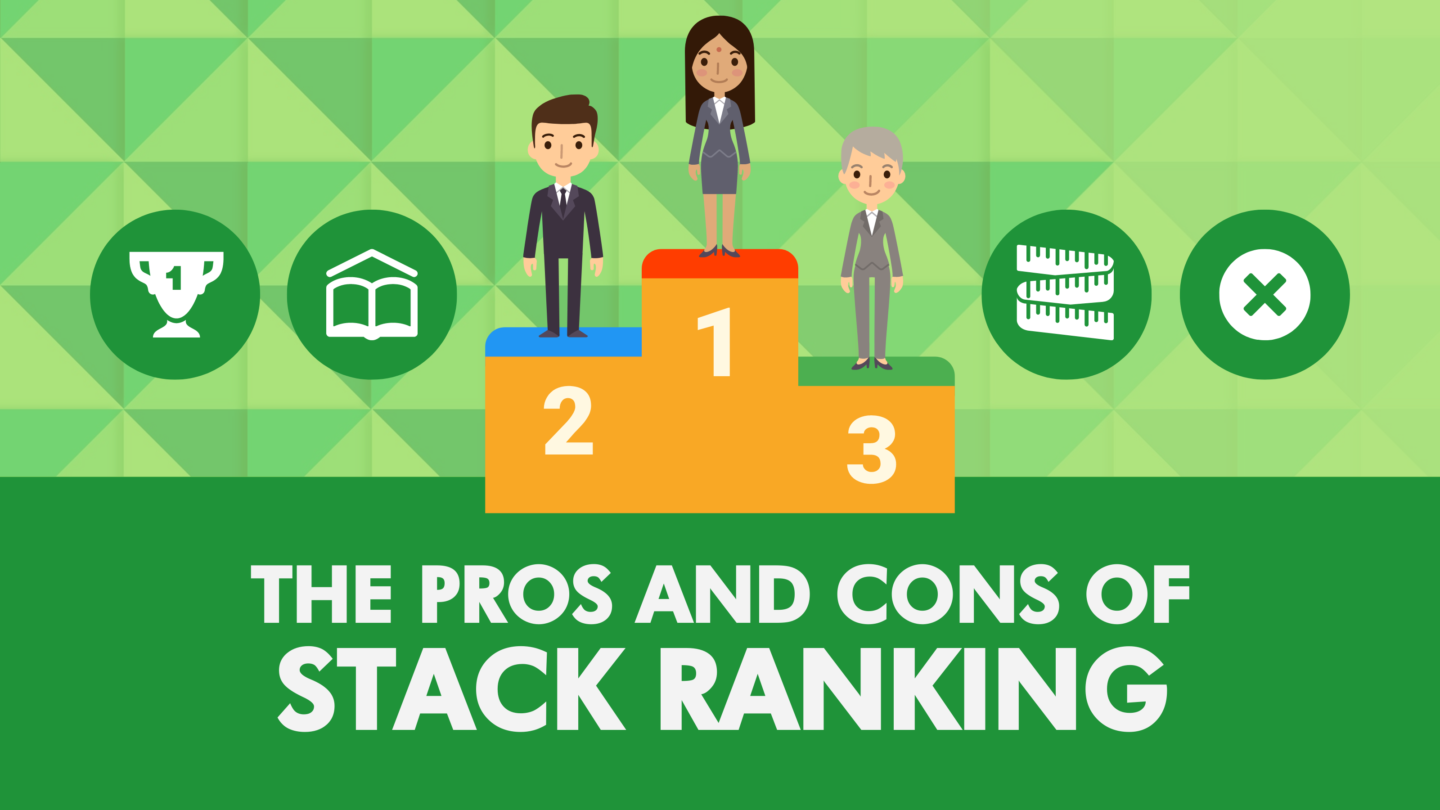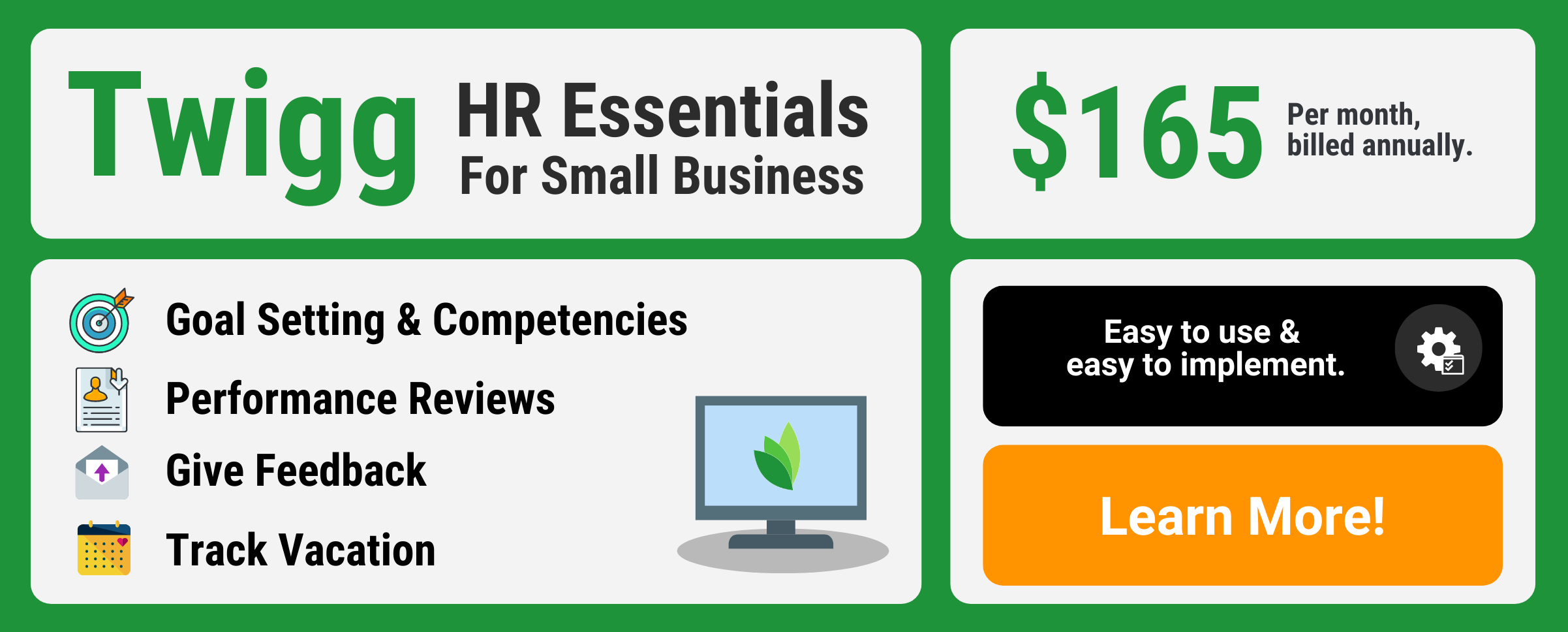
The Pros and Cons of Stack Ranking
Any amount of research into the practice of stack ranking will demonstrate just how divisive of a topic it truly is. Some condemn it as a cutthroat, destructive, creatively stifling practice, while others claim it is the secret ingredient to securing a high-performance workplace. But which side is right? And how do we know if (or when) we should (or shouldn’t) use it?
What is Stack Ranking?
Stack ranking is a management practice in which leaders are asked to rank employees on a curve according to their performance, with the lowest performers placed at the bottom and rallied into performance improvement plans or terminated altogether.
This practice was first conceptualized by GE’s CEO Jack Welch in the 1980s a way of differentiating high-performers and low-performers. He also popularized the 15/75/10 curve for the top, middle, and bottom employees. By ranking individual employees relatively against each other, managers can reward top-tier performers and identify and weed out low performers. This method of evaluation worked well for GE because, at the time of its introduction, the company had become too big, and the employees too comfortable.
Stack rankings arise when organizations are seeking out methods of enacting performance appraisals in an effective and efficient way. The goal of any management team that instigates performance appraisals is to cultivate a high-performance workforce. But stack ranking limits the range of autonomy of that process altogether.
In a stack ranking performance appraisal process, managers are forced to rate their employees according to the existing bell curve. Only about 10-20% can be designated top performers, and a fixed number of employees must be labeled as low performers. Those labeled as such are then either placed in a probationary improvement period or let go. In between these two fixed groups is almost 70% of the workforce, whom are all labeled “vital” and are depended upon for adequate performance.
Like any other performance appraisal process, the practice of stack ranking has produced a variety of arguments both for and against it and yields both positive and negative effects for organizations and among employees. Perhaps one of the most divisive methods of performance appraisal, stack ranking is a largely contested debate, and hinges upon the organizational makeup of a company, and the ultimate goals of leadership.
The Pros of Stack Ranking
Promotes Meritocracy
One of the primary goals of stack ranking was and continues to be, to achieve meritocracy across businesses. A meritocratic system is one in which ability and achievement is the basis for career advancement and growth, rather than connections, status, or power. Many would argue that encouraging meritocracy if the greatest accomplishment of the stack ranking system altogether.
In defense of GE’s stack ranking process, former vice president and CEO David Calhoun claims that it was effective and worked for their corporation because they had a clear objective to support its continuation. That objective, like many other organizations, was to clearly articulate what was required for employees to become high performers in the organization. The process of stack ranking forces honest, transparent discussions between leaders and employees about where employees stand in meeting that articulated criteria.
In this sense, stack ranking can help discourage circumstances in which employees face uncomfortable or ambiguous performance appraisals and lack guidance on how and where they should focus on improving themselves. Whether it’s a high-performing employee who feels they aren’t getting adequate recognition, or a low-performing employee who finds themselves unexpectedly punished or even laid off, the method of stack ranking helps to clear the confusion around employee performance expectations.
Boosts Employee Morale
It is widely agreed upon that praising high performers is a key driving force in maintaining their enthusiasm and level of work effort. The process of clearly identifying, and appreciating, high performers makes it easier for organizations to draw out and follow through on the necessary steps to keep them. In the stack ranking process, managers are provided with critical data that can help them quickly identify patterns in performance and draw out and champion their top talent.
On the flip side, some may also argue that stack ranking poorer performing employees, and clearly addressing low performance, can help boost productivity. If low-performing employees are given specific goals and areas to improve and develop, they are much more likely to increase their performance levels, rather than scrambling to identify what specific practices they need to change with no real guidance or clarification. Additionally, regular and high performers feel much more motivated, and appreciated, when they see that low performance issues are being addressed and taken care of.
The Cons of Stack Ranking
While the above mentioned “pros” of stack ranking are completely viable for some organizations, there are other companies and managers that would fervently disagree and argue that stack rankings have the exact opposite effect.
Measurement Systems are Arbitrary
One of the rules that stack ranking relies on is that employee performance must be measured objectively. However, most organizations rely on the managers’ subjective perception of their employees and their contributions to the company. Relying on objectivity also poses an issue when many managers suffer from biases, whether explicit or implicit.
Triggers Fear and Shame
When performance management runs the risk of being entirely too subjective, it makes the entire process of stack ranking hard to grasp and introduces fear and even shame into the workplace. Employees who feel too anxious about losing their job or speaking up are much more likely to feel dissatisfied and unproductive.
Similarly, shame is malignant. While guilt can be harnessed when applied in a productive, constructive way, shame produces the feeling for employees that failure is part of who they are at their core, and that there is nothing they can do to improve themselves. It also has drastically negative effects on the mental and physical health of those feeling it, which lends risk to negative tendencies such as aggressiveness, lack of empathy, risky behaviour, and general dissatisfaction. When low-performing employees are riddled with shame and made to feel they cannot improve upon their weaker points because it is the makeup of who they are, it leads to disengagement and lower productivity across the board.
Creates a Negative Culture
Many argue that while on the surface seems to promote a meritocratic way of management and promotion, it produces an environment that encourages unproductive behaviour. Rather than promoting teamwork and collaboration, its rewards invite backstabbing and discourages transparency. The fear of losing one’s job outweighs the comfort employees feel to speak their mind and present their own opinions, leading to a closed and stifling environment, in which innovation and growth suffer.
Stack Ranking: A Good or Bad Idea?
Many point to an organization’s core values and performance review process when it comes to creating a great work environment and company culture. To succeed, your business must be someplace that people want to work, can be innovative, and are not punished for taking risks in the name of organizational success. But does stack ranking promote that, or discourage it?
Stack rankings are riddled with issues and complexities, but they could still have a positive impact on your organization if it is a system conducive to the encouragement of productivity and growth. Check in with your employees, identify the sources that they feel provide them the most motivation. While stack ranking shouldn’t be the only facet of your performance management process, the key is to remain open-minded and receptive.






